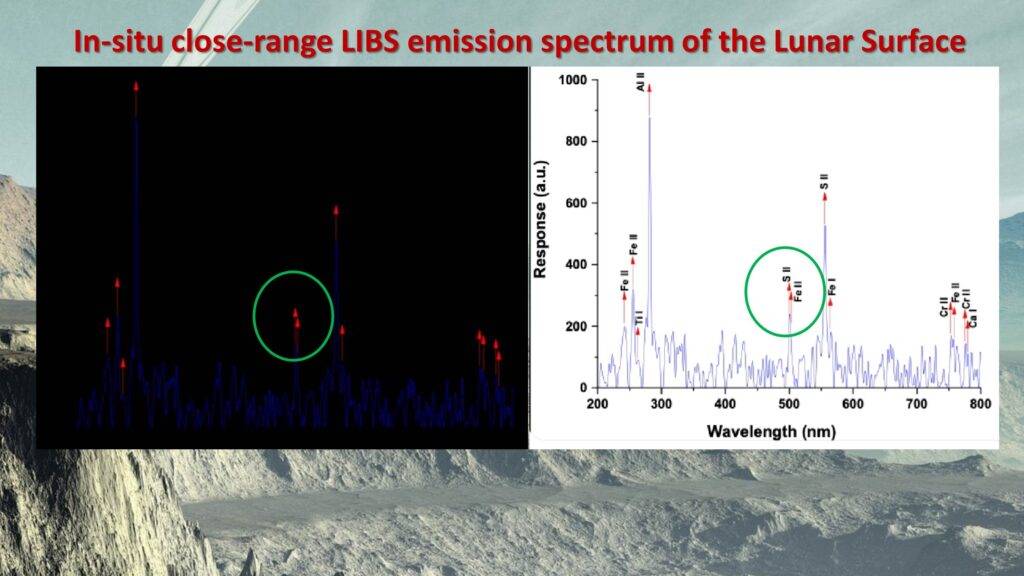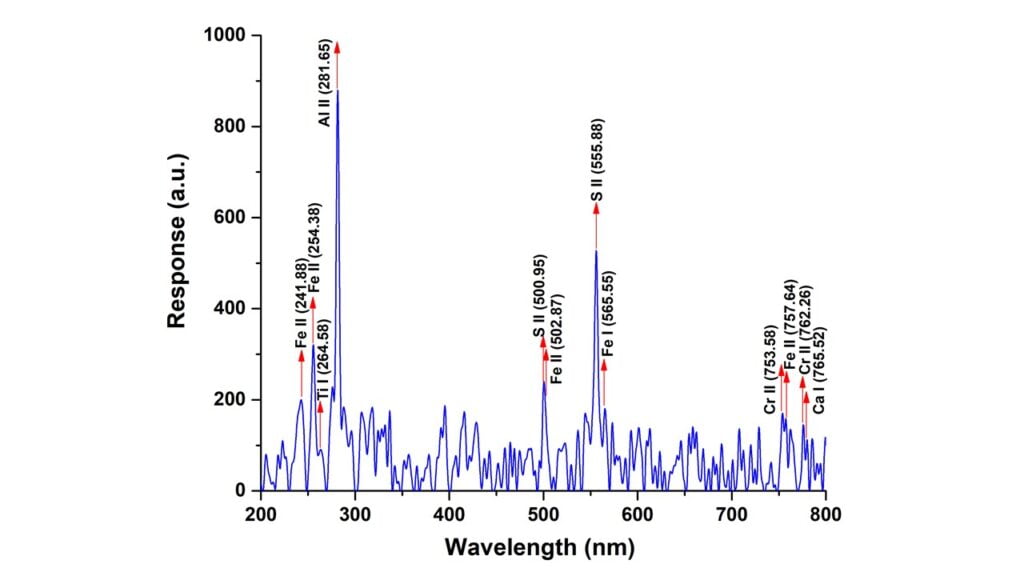
The Moon, Earth’s celestial companion, has long held a fascination for humanity. For centuries, the Moon inspired poets, fascinated scientists, and drew lunar explorers. Among its mysteries, the discovery of sulphur on the Moon is a big achievement in space science.
Discovery of Sulphur on the Moon
Laser-Induced Breakdown Spectroscopic (LIBS) analysis of the lunar surface by Chnandrayan-3 has discovered many elements including Sulphur. LIBS technique is used to analyze the elemental composition of a material. It operates on the principle of using a high-energy laser pulse to generate a plasma or spark on the surface of the material. This plasma emits light, and by analyzing the emitted light, we can determine the elemental composition of the sample.
Discovery of Sulphur on the Moon will be a keystone for scientific exploration of space. Sulfur is a chemically versatile element that has diverse roles in biology, the environment, industry, and energy production. Moreover, its presence and cycles are essential for the functioning of ecosystems and the well-being of life. However, its release into the atmosphere as pollutants can also have detrimental effects.

Previously, the Apollo mission lunar samples were a treasure trove of data on the Moon’s elemental composition. These samples, mostly consisting of rocks and soil, were analyzed by scientists on Earth. They discovered that the Moon was primarily composed of Oxygen, Silicon, Magnesium, Iron, Calcium, and Aluminium. These elements are essential building blocks for terrestrial rocks and minerals.
One remarkable discovery was the presence of Helium isotope (He-3). This element has significant interest due to its potential use in nuclear fusion, a clean and efficient energy source.
Impact on Science and Space Exploration
The discovery of elements on the Moon not only enhanced our understanding of lunar geology but also had broader implications for planetary science and space exploration. In addition, it demonstrated the feasibility of conducting scientific experiments on celestial bodies beyond Earth. It also paved the way for future lunar missions, including robotic missions and plans for establishing a sustainable human presence on the Moon.
As technology continues to advance, future lunar missions hold the promise of unveiling more about the Moon’s elemental composition. The Chandrayan ambitious lunar exploration initiative by ISRO aims to return humans to the Moon and establish a sustainable presence. This endeavour will undoubtedly provide new insights into the Moon’s composition. In addition, it will help to discover valuable resources for future space exploration.
Conclusion
Indeed, the discovery of Sulphur on the Moon is a remarkable achievement by ISRO in space science. It comes after centuries of lunar study and dedicated work by scientists who ventured to explore our neighbour. As we keep exploring space, the Moon remains essential for discovery and potential resources. This marks a bright chapter in our journey to the stars.

